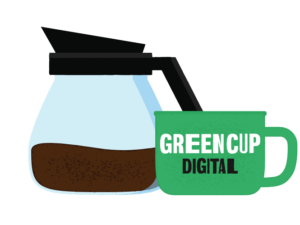Do you spend hours writing, designing and formatting your bulk emails, but consistently see a low open rate? There are few things more frustrating than putting time and energy into your content, only for it to go unnoticed. Time equals money, and if you’re spending the time but missing KPI targets, that’s a serious problem for employees and business owners alike.
It’s time to fix the problem, fast. So, why are your emails not getting clicked? Let’s take a closer look at four key areas impacting email open rates, and what you can do to absolutely nail it on each. By the end of this blog, you will have the tools you need to give your email marketing campaigns a total refresh – and start hitting those growth goals.
Key Area #1: Subject Line Strategies to Improve Open Rate
In 2026, 376 billion emails will be sent and received each day, according to research published by Laura Ceci of Statista on Jun 20, 2025. With so many people hitting “Send,” it’s never been more important to stand out. That means catching your audience’s eye right away with a great subject line.
You don’t have to be an expert copywriter to write a great subject line, but it helps to know some copywriting best practices. Here are a few do’s and don’ts to get you started:
Subject Line Do’s:
- DO: Consider your audience, and your product. Make sure you’re talking to your buyer personas. (If you don’t have personas, now is a great time to write them!) Get specific about something you know will pique their interest, while staying on brand.
- DO: Use power words like “free,” “new,” or “limited-time” to convey excitement or urgency. These words have been used for years to grab attention, and they still work. Just be sure to use them sparingly (not in every email you send), and don’t stretch the truth. Subject line misuse will send your email straight to spam jail.
- DO: Keep it short. Some pros recommend under 40 characters, or 6 words. That’s typically how much you can fit without the message getting cut off in most email providers like Gmail or Outlook. But more importantly, you want to get to the point quickly.
Example:
This subject line from Fresh Clean Threads is a great example. It’s short and snappy, builds urgency, stays on-brand and seasonal, and it piques curiosity. That beautiful use of ellipsis teases the reader, inviting them to click.
Subject Line Don’ts:
Don’t: Go for shock value. While some businesses resort to silly subject lines to grab your attention, we don’t recommend it. Sacrificing your brand voice or your reputation just for clicks misses the whole point. And it’s a great way to get unsubscribed.
Now that you’ve got a juicy subject line, you’re ready to hit send, right? Not yet. The next steps are just as important.
Key Area #2: Boost Open Rate with Personalization
Once you’ve got a strong subject line, the next step is personalization. Personalized emails have a 29% higher open rate and a 41% higher click-through rate compared to non-personalized emails.
Why? Because people want a personalized shopping experience. Personal touches like using a subscriber’s name or referencing their behavior build trust and help your message stand out.
But it only works if it’s accurate. Misspelled names or irrelevant details can damage credibility. Keep it natural, relevant, and aligned with your customer data. We’ll take a closer look at tailoring content with segmentation in the next section.
Key Area #3: Boost Open Rate with Better Segmentation
If personalizing the “To” field makes your customers feel seen, segmentation takes it even further. In a Marketing Charts survey, 34% of respondents said the most frustrating thing about email personalisation is being recommended items that don’t match their interests. Your customers want to feel like you think about them even on your days off. (And if you’re in marketing, you probably do.)
You can start by segmenting simply by gender, age group, or location. When you’re ready to level up, explore these:
- Purchase History
- Email Engagement
- Stage in the Buyer’s Journey
- Interests or Preferences
- Website Behavior
- Purchase Frequency or Spend Level
- Sign-up Source
For example, if you’re marketing for a jewelry store that sells women’s earrings, children’s pieces, and men’s watches, you wouldn’t send a “Mommy and Me” sale to your entire list.
Instead, you might target repeat female customers who’ve previously purchased children’s earrings. Maybe you’ve been tracking which web pages they’re explored or items they’ve added to cart. Even if the men on your list are shopping for Mother’s Day, they shouldn’t get the same message. Their version might start with something like, “Hey Dad!” Same sale, different tone.
Key Area #4: Send Times
What’s the point of a great subject line if no one sees it, right? Timing matters! Send at the wrong time, and your email’s buried in the inbox. And of course, there is a ton of research out there claiming the best time to send emails. Advice like, “Send Thursdays at 10 a.m.,” “Tuesday afternoons only,” “Never send an email on a Monday, but also never on Fridays,” will leave your head spinning.
The truth is, the best time to send emails depends on your audience, your brand, and their behaviors. Start by testing the popular theories. Use A/B testing to identify when your audience is most likely to engage.
Don’t let Your Hard Work go Unnoticed
You work too hard and spend too much time crafting amazing emails to let them go unopened. Improve your email marketing KPIs by taking the time to:
- Perfect your subject lines
- Personalize your emails
- Segment your audience
- Test and track your send times
Above all, remember to make it intentional. Every message should feel purposeful and be well thought out. If your emails aren’t performing, it’s a sign your strategy needs a closer look. Don’t guess at it; let us help. Reach out to us today for an email marketing strategy that works.




